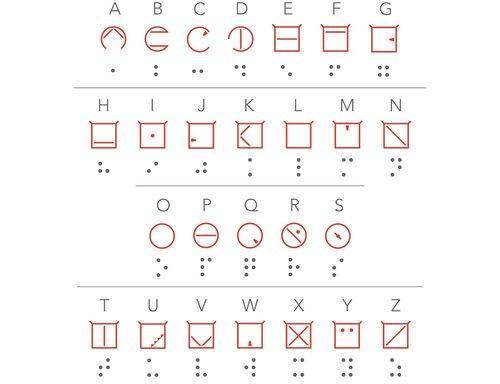Braille Is NOT a Language, And Other Mythbusters About This Fascinating Code
How much do you know about braille? This fascinating system is more complex and interesting than you probably thought! With Oct. 7-14 being National Braille Week, read on to learn all about some common misconceptions and other fun facts about braille — plus a potentially easy-to-learn alternative called ELIA!
Braille Mythbusters — Fact or Fiction?
Myth: The 6-dot cell was invented by Louis Braille!
Fact: You may think that braille was solely invented by Louis Braille, which seems like a logical guess, but this isn’t the complete answer. Actually, Louis Braille took inspiration from Charles Barbier, the original inventor of the 6-dot cell system. Barbier invented the dot system as a military code for silent communication on the battlefield at night. At the National Institute for Blind Children in 1824, Braille, who went blind at three years old, adapted the 6-dot cell system to develop a tactile writing and reading system for the visually impaired.

Myth: Braille is a language, and only used for letters!
Fact: Braille is actually not a language, it’s a code. The 6-dot cells are a system for transcribing the Roman alphabet, but also music, math, and chemistry. Louis Braille played the organ, piano, and cello, and he wanted to make sure that blind musicians had a way to read and write music.
“Musicians that are completely blind have all of their music in braille and are able to play and perform exceptionally well. I think it’s a great system because the visually impaired population deserves to read and have an education just as much as anyone else. It’s super cool!” says Lola Walter, a percussionist and aspiring Arts Administrator at the University of Kentucky, who has been legally blind since birth.


Braille in chemistry is based on Nemeth braille.

There are different systems of braille for dozens of languages including Spanish, Japanese, Arabic, Korean, Mandarin Chinese, and many others!
Myth: It’s common for blind people to know braille!
Fact: In the US, almost 8 and a half million people are visually impaired, but less than 60,000 can read braille. That’s less than 1%, and the percentage is decreasing each year. One reason for these low numbers is that braille is difficult to learn — usually it takes from 10 months to multiple years of studying to become proficient. This is especially true for older braille learners, when their vision becomes impaired later in life. Improved medical care also means that many patients are able to retain vision for longer, but the loss later in life means that learning braille is more difficult than if they had started as children. Additionally, new technology like screen readers and audio recordings makes many things such as the internet and books more accessible without the need for braille literacy.
Myth: With modern technology such as audio recordings, reading and writing isn’t as important!
Fact: Although audio recordings and other new technology increase accessibility, being fully literate is crucial to be able to receive a full education and maximize employment opportunities. Employment rates for the visually impaired are around 85 percent for braille readers and only 34 to 43 percent for non-braille readers.
Myth: Braille is the only tactile system for writing and reading!
Fact: Braille is by far the most established system for the visually impaired. However, this may be changing! A newly developed tactile alphabet and number system called ELIA (standing for Education, Literacy, and Independence for All) is based loosely on the Roman alphabet. It was recently created by Andrew Chepaitis, a former equity research analyst. It is based on the concept that most visually impaired people lose their vision later in life, so they are able to use their familiarity with the Roman alphabet to more quickly learn ELIA than braille. Because ELIA uses elements of the Roman alphabet, users are able to learn it in just hours to weeks.

Image courtesy of ‘the ELIA idea’.
“I think it’s great that people are working to develop a system that is easier for the blind and visually impaired population to learn,” says Lola.
As the established system, braille is prevalent in public for elevator buttons, bathroom signs, and more. Would it be worth learning a new system that isn’t widely used yet? Would an easier-to-learn system encourage more people to learn it? Only in time will we know.
Increasing accessibility is a key value at Nanodropper. Learn how you can take back control of your eye health, one drop at a time.
Author: Alena Rainsberry

Hi! I’m at work surfing around your blog from my new apple iphone! Just wanted to say I love reading through your blog and look forward to all your posts! Keep up the outstanding work!
fantastic points altogether, you just gained a new reader. What would you recommend in regards to your post that you made some days ago? Any positive?
I don’t even know how I ended up here, but I thought this post was great. I do not know who you are but certainly you’re going to a famous blogger if you are not already 😉 Cheers!
Thank you for another informative website. Where else could I get that kind of info written in such an ideal way? I have a project that I am just now working on, and I have been on the look out for such information.